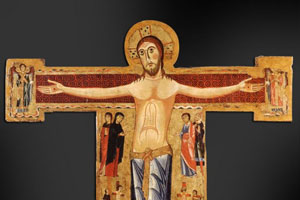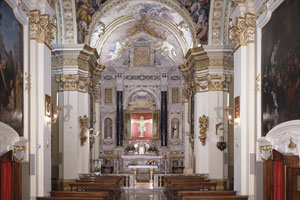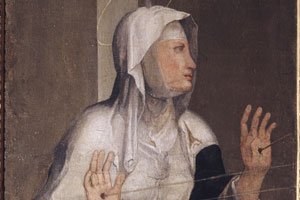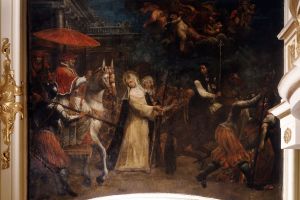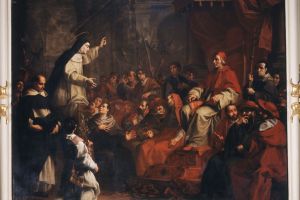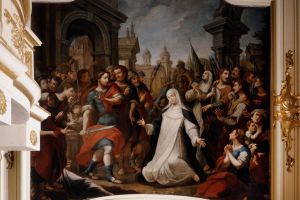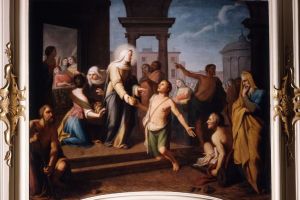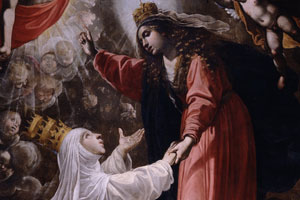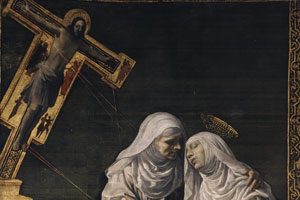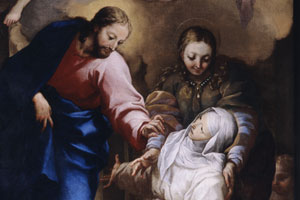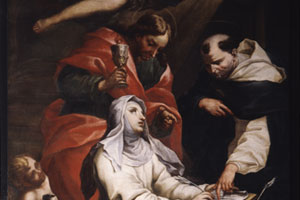The Shrine of the House of Saint Catherine
Church of the Crucifix
The importance of this church, and its very reason for being, lie in the presence of the wooden crucifix from which Saint Catherine received the stigmata (from the Greek stigma: mark), which are the wounds similar to those inflicted on Jesus Christ during His crucifixion.
This miraculous event took place in Pisa, where Catherine had gone in 1375 at Pope Gregory XI’s request for the purpose of persuading the Lords of the city not to take part in the anti-papal league. In the Legenda Major, Raymond of Capua narrates that on 1 April of that year, while she was deep in prayer in the church of Santa Cristina, Catherine saw five blood-red rays, aimed at her hands, feet, and heart, streaming down from the crucifix in front of which she was kneeling. She immediately asked God for the stigmata to be invisible, and before the rays could reach her they changed color, becoming resplendent with light. They remained visible only to the Saint for the rest of her life, miraculously appearing at the moment of her death. The validity of Catherine’s stigmata was only recognized officially in 1623 by Pope Urban VIII, after a debate lasting about two centuries.
As had happened for Saint Francis of Assisi, who was the first Saint to receive the stigmata, for Catherine too the episode marked the culmination of her spiritual journey and represents her identification with Jesus Christ: Catherine . . .
